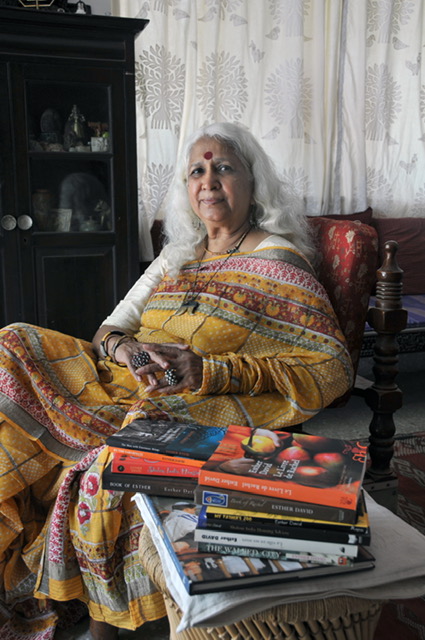
Esther David has received the Sahitya Akademi Award for English literature, specifically for her novel ‘Book of Rachel,’ in which she included Jewish recipes. She received an award in Paris for preserving the heritage of food in her literature. Few years back, she moderated a session on Food, and Literature in New Delhi by The Hindu Literary Review. She has received research awards to document the Bene Israel Jews of Gujarat and Indo-Jewish cuisine, from an USA based research institute. Her book on Indian Jewish cuisine will be launched this year.
Ankita Sharma spoke to her about her food experiences.
Which city do you think qualifies as a true gourmet travel destination?
Paris – city of love; offers the best of French cuisine and also that of other countries. Here, the tradition of food is preserved like a form of art. The food culture is changing, yet the French prefer traditional food, both at home and at restaurants. It is interesting how eateries have a certain classification, like cafes are smaller,
open almost all day and have a limited basic menu, along with tea, coffee, soft drinks, beer and wine. And, on a sunny day, one can sit on a roadside café for hours having a animated conversations with family or friends. Restaurants are classy with formal dining, a menu of different courses, while Bistros are smaller restaurants, often with home-style cooking and Brasseries serve classic traditional dishes. Then, there is the fashionable, Nouvelle Cuisine, where food is cooked with lighter, delicate dishes, presented in an unusual, original and artistic way, with a wide selection of wine. Most places, almost always have a ‘Plate of the day,’ which is a platter specially prepared with a starter, like soup or salad, chicken or meat with potatoes or rice or vegetables with a baguette or bread-basket, which ends with a dessert and the typical tiny cup of French express coffee
with a chocolate cube. While Haute Cuisine or Grande Cooking is available in highly priced gourmet restaurants, where chefs prepare meticulous traditional French dishes, which are presented in an artistic style, known for their excellence, presentation, colour schemes and combinations are important, like fish is almost always served with white wine.
Paris also has places, which serve Pasta, Tarts and Sea-food, which are equally popular. Bread shops have all types of bread and confectionery -baguettes, croissants, fruit tarts, éclairs, macrons and cakes, even sandwiches, which are half- baguettes with a filling of cheese, vegetables or chicken. Cheese is bought from specialty shops, the supermarket or on some designated days, open-markets are held on plazas, where you get everything from cheese, vegetables, fruit, chicken and fish. In Paris, cooking is a high art, where chefs who have mastered the
culinary arts are employed and if a restaurant has been honoured with a Michelin star, it is held in great respect, as food is an important aspect of French life. Then, there is Le Cordon Bleu institute, where aspiring chefs study the culinary arts.
Here, even waiters with their stylishly tied aprons are interesting to watch, as they take orders, make suggestions and serve food, as if; they were offering a precious gift to you. Paris also has cafes and restaurants from all over the world. In some corners of the city, street food is available with grilled sausages, sizzling hot crepes, waffles, and roasted chestnuts or hazelnuts.
In Parisian restaurants, often snails are ordered as starters, stuffed with butter, a little crushed garlic with chopped parsley, seasoning, baked and served with a snail-fork. Vegetables baked in a creamy Béchamel sauce. A plate of well done or medium-rare steaks served with French fries and a salad bowl. A starter of cheesy onion soup or chicken cooked in wine, ratatouille in a vegetable stew with rice or a beautiful pink Salmon filet cooked lightly in butter with minimum seasoning and sprinkled with saffron or Bouillabaisse, a fish based stew made with fish stock, a variety of seafood and seasoning. After a small break, they also have the famed French cheese Camembert, goat cheese or Brie, of course with a baguette and a glass of red wine which is a perfect combination. Salad is known to be a good taste-changer, made with fresh salad leaves; tossed with a French dressing of olive oil mixed with chopped garlic, salt, pepper and a dash of mustard.
This is often ended with a dessert of creme caramel or a dense slice mof chocolate cake or a portion of fruit tart or ice-cream with chocolate sauce.
You can also look out for food from other countries, like the Mexican Guacamole made with pulp of avocados, the far eastern chicken or duck cooked in a subtle but spicy plum sauce or chicken spring rolls served with a tangy sauce, served with lettuce and mint leaves or you can even find Indian food or Thali restaurants in some areas.
Bon Apetite!
Together with food, Paris is also a city of the arts. Almost all great authors have lived in Paris, at some point or other. It may, not have been easy for them, but the city inspired them, with its bewitching landscape, the beautiful people, the boulevards, the River Seine with its bridges, side-walks, cafes, ancient monuments, art exhibitions, performances at the Opera, Ballet, contemporary dance, western classical music, jazz, theater, Museums of art, the fashion scene, the French language, literature, innumerable book shops and monumental sculptures of well known authors like Balzac. Almost, everything inspired these writers who lived in Paris even for a short time, as mentioned in their narratives. The City of Light, culture, architecture and literature is known for its galleries, cinema theatres, book shops and famous Shakespeare & co. where books in English are available. Even the cafés where some artists wrote or met other writers, artists, art critics and philosophers’ are landmarks of
the city, like the cafe Les Deux Magots; was where famed author Jean-Paul Sartre, Simone de Beauvoir and Camus; wrote and also met friends and other intellectuals. I felt blessed, when my first novel ‘The Walled City’ was translated in French, known as ‘Le Ville en ses Murs’ was launched in Paris, the publisher organized a get-together at Les Deux Magots and introduced me to some well known French authors and literary critics.
In Paris, the history of art comes alive in its nooks and corners, art galleries and museums. The Louvre Museum, with its central glass pyramid is where; one can see the portrait of Mona Lisa by Leonardo da Vinci and sculptures by Michelangelo. The Orsay Museum is known for its collection of Impressionism with paintings by Monet, Van Gogh and other well known artists. Most art lovers do not miss the Picasso Museum and The Center Pompidou, which is known for its collection of Modern art and a mobile- colourful-fountain by my favourite artist Nikki de St.Phalle.
The city has many open spaces, where artists make portraits of tourists amidst groups of dancers, Rappers, Hip-Hop artists, musicians, acrobats, jokers and Living Statues, which are actually street artists, dressed like; well known personalities or wear body-paint and pose like statues, standing there for hours, till they have earned enough for the day.
What has so far been your most memorable meal?
My most memorable meal was with late litterateur Khushwant Singh. Few years back, while in New Delhi, I was invited for dinner by Khushwant Singh and his daughter Mala Dayal. It so happens, Mala has been my long-time friend and the editor of some of my novels. Father and daughter live in apartments facing each other.

At Khushwant Singh’s door; there was a sign, which read, “Do not ring the bell unless you are expected.” On the same doorpost, there was a Jewish Mezuzah, presented to Khushwant Singh by the first Israeli ambassador to India. Immediately, that became the starting point of our animated conversation about Israel and Jewish life. The beautifully arranged drawing room had a personal touch, as the walls were lined with books, paintings and family heirlooms.
Khushwant Singh was sitting in an armchair with his legs stretched out on a foot-stool. He was dressed in a Tee shirt, pajamas and his typical headgear. On the side table there were note-pads to write his columns and books.
An early riser, he has a disciplined life style. At 6 a.m. his Man-Friday would serve him coffee and breakfast; with the morning papers. After going through the news and solving the crossword puzzle, he wrote till lunch-time…. The day’s menu was prepared by Mala. He had breakfast of toasted brown bread and coffee, a lunch of soup,
sprouts and diet-bhel-puri. Twice a week he had dahi-vada and after a siesta, he read his mail and listened to Western classical music; on the radio. After which, the doors of his home, were opened for visitors at 7 p.m., and Khushwant Singh met them for about 45 minutes.
Mala told me, her father was adventurous about food, which was served for dinner. Soon, an early dinner was served on small side-tables, in the same place, where we had been sitting all evening. Khushwant Singh ate while talking and savouring the chicken; with his legs stretched out on his foot-stool. We had chicken breasts stuffed with olives, washed down with drinks; of the author’s choice. The chicken was simple and non-spicy as the meat was rolled around the olives, which was marinated in a light sauce and baked till golden brown. The conversation was amusing and sprinkled with spicy stories. Although, I was elated with our light-hearted conversation, I had to be alert, as I had to eat quickly and give correct answers to his questions, as he was sharp, a great conservationist and a good listener. It was a rare and memorable evening, which I spent with the grand old man of literature.
If you were asked to plan your last meal what would you choose to eat, the setting you would like and whom you would like to invite for the meal?
The dining table should be a table-for-two, oval-shaped and in rose-wood. It should be in a small house, where the dining room would have wood-panels with a glass façade, which would face a turquoise blue sea, from where we can see a golden yellow full moon rising in the sky. The background would have prints of the portraits of Frida kahlo, including some of her fruit-paintings.No table-cloth for me, the dining table would be just polished wood, with sparkling white marble bowls placed in the center, filled alternately with deep yellow marigold flowers, bright red fragrant desi roses and mogra flowers. The plates would be; burnished, brown ceramic plates with bright orange borders, with similar bowls and curved designer spoons in silver.
The napkins would be in leaf-green fabric with bright pink borders and folded like lotus-flowers.The food on the table, would have a silver-coated-platter arranged with fish filets, as starters. The fish would be seasoned with salt-pepper, dipped in a beer-batter and deep fried in oil, till crisp and golden brown, removed on an oil-absorbant-paper and arranged in a circle; on the platter.

Chicken would be the main meal. There would be a huge red serving casserole filled to the brim with fresh green masala chicken curry made with coriander leaves, green chilis and coconut milk, which is a Bene Israel Jewish recipe. It would be served with a mound of saffron rice, placed in a white China bowl. Next to it, there would be a mound of poories, the dough of which would be made with coconut milk and jaggery; in the Bene Israel Jewish style and served like mini pyramid in a Canary-yellow ceramic platter.
Slivers of lemon would be served in a small leaf-green ceramic bowl, shaped like a half-cut lemon. While, the drink would be Punch served in a shining, transparent purple glass carafe, so that the mild-red Punch and purple glass would complement each other, as they would be served in tall long stemmed purple wine glasses from Moreno.
And, the dessert would have peeled, cut, cubed Alphonso mangoes served in bright red ceramic bowls. Actually, I would have this colourful meal, resembling a painting with this well known verse from Omar Khayyam – “Here with a loaf of bread beneath the bough, a flask of wine, a book of verse – and Thou besides me; singing in the wilderness….”


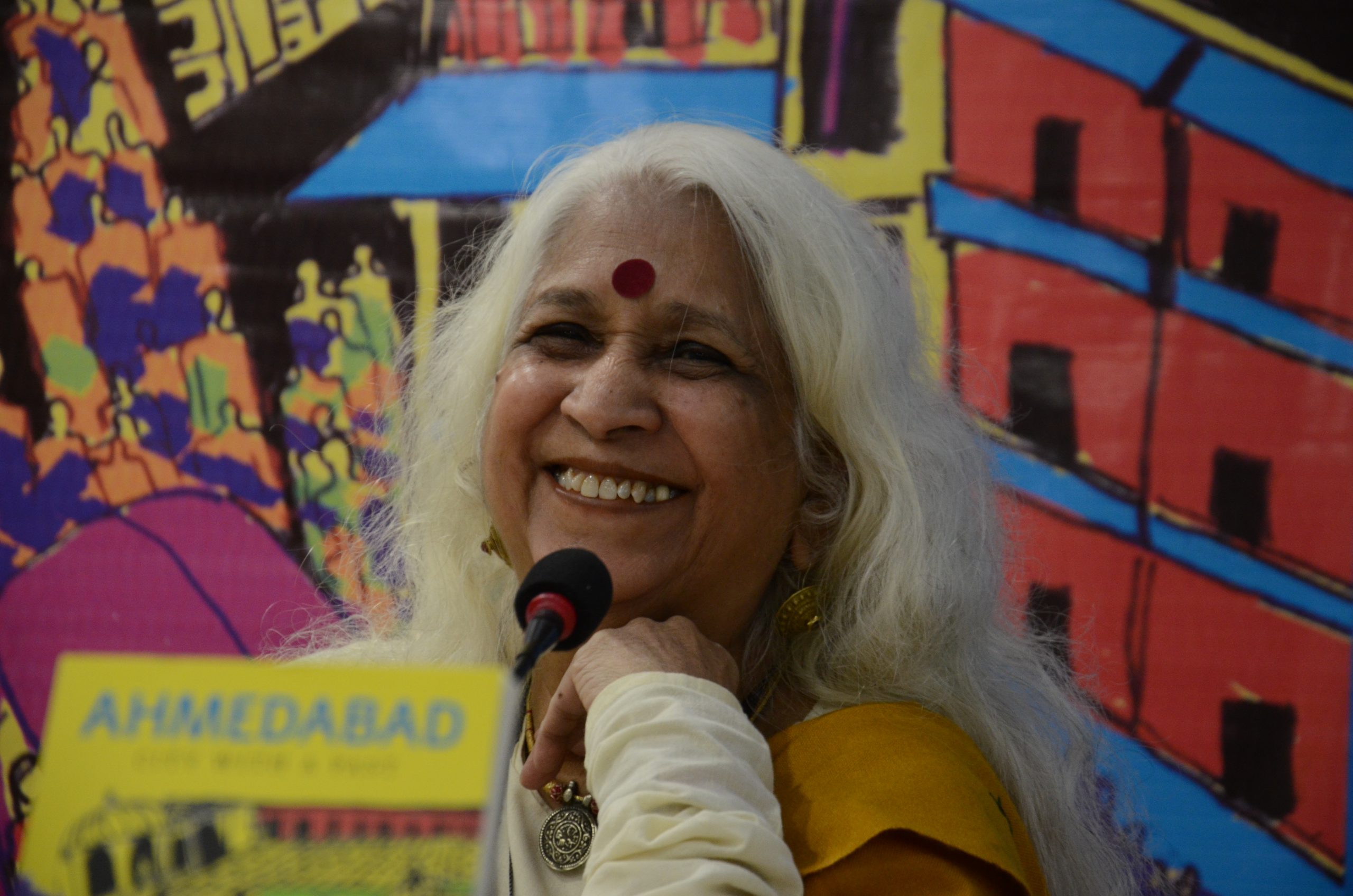
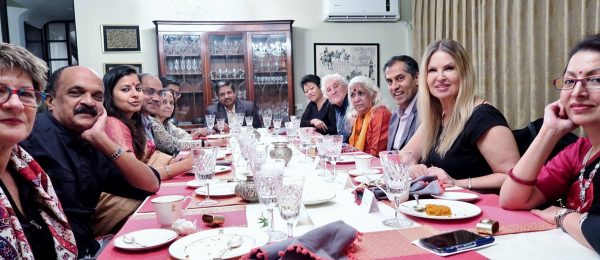
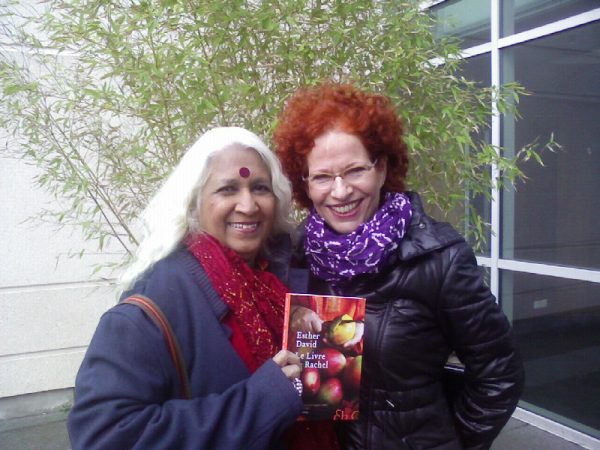
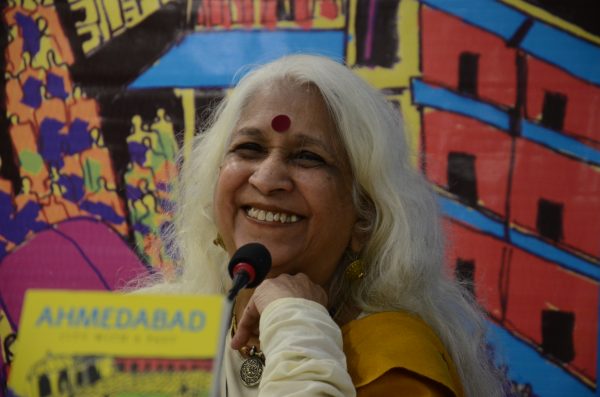
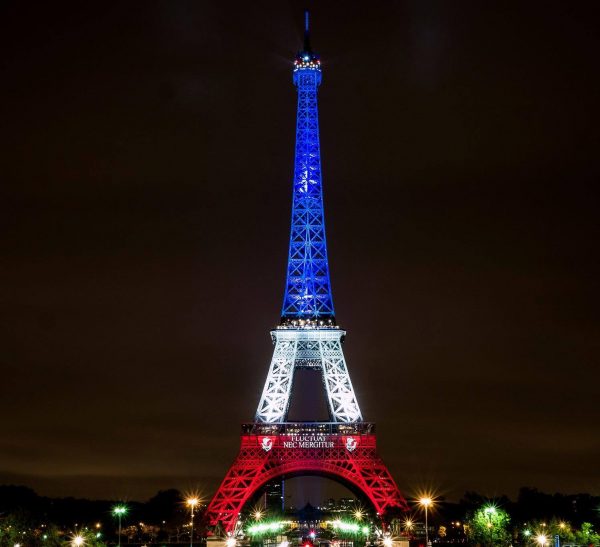


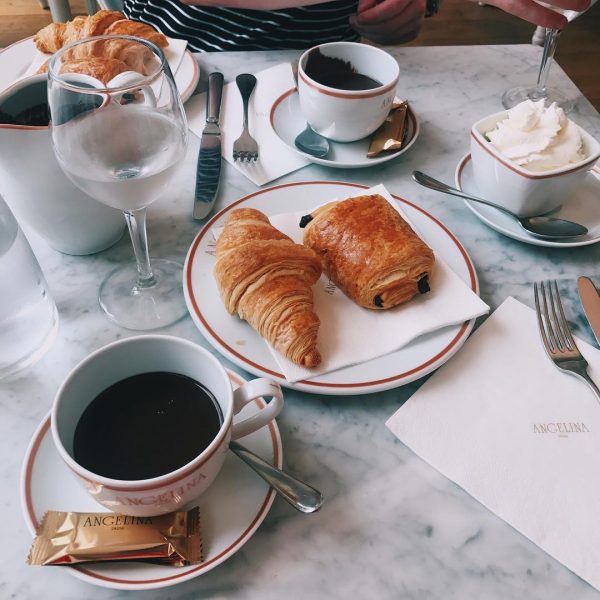
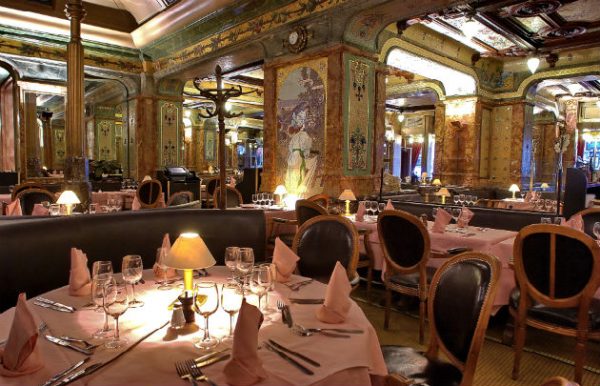
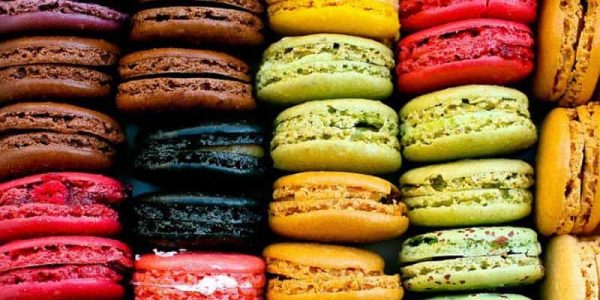
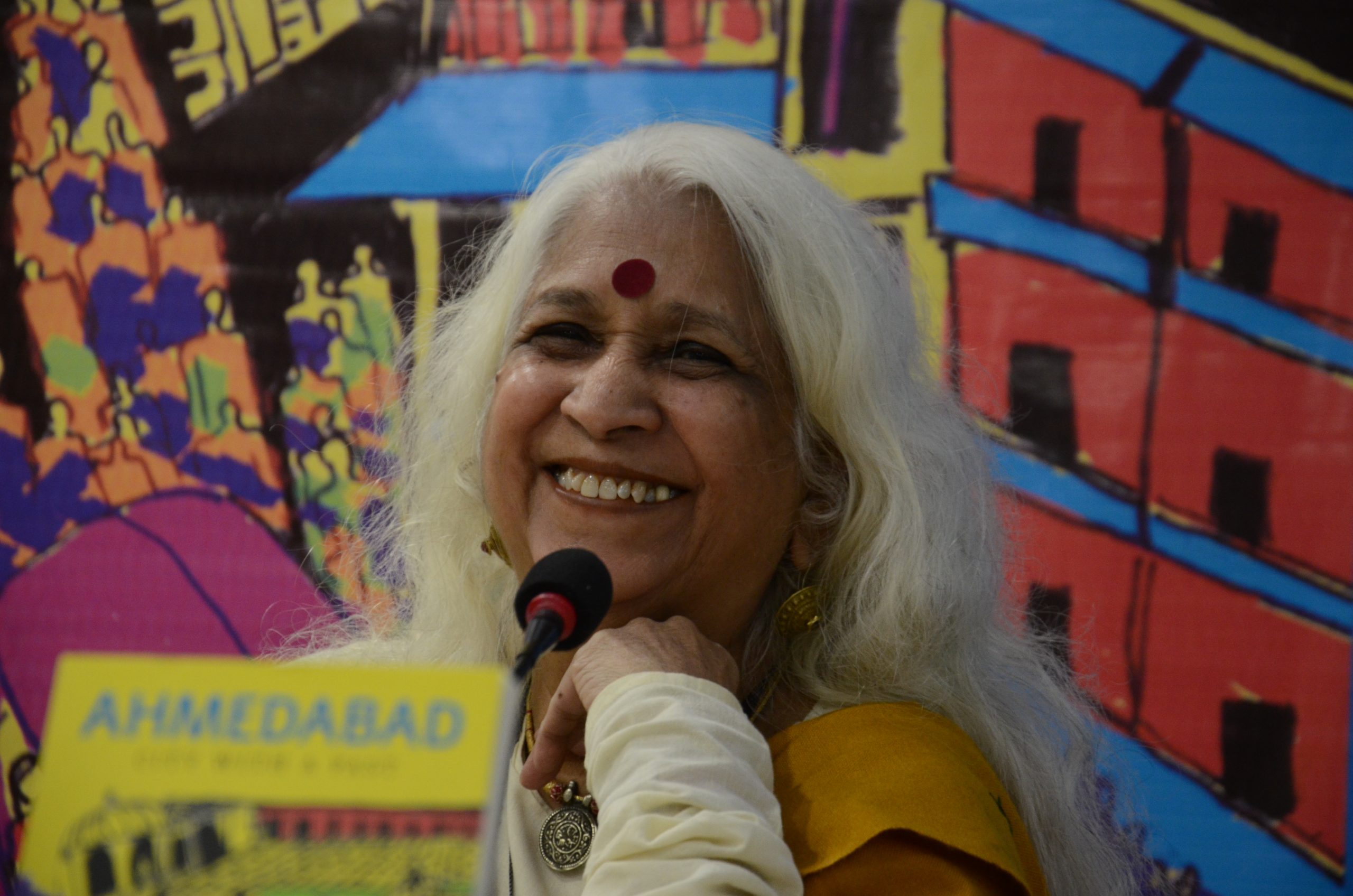




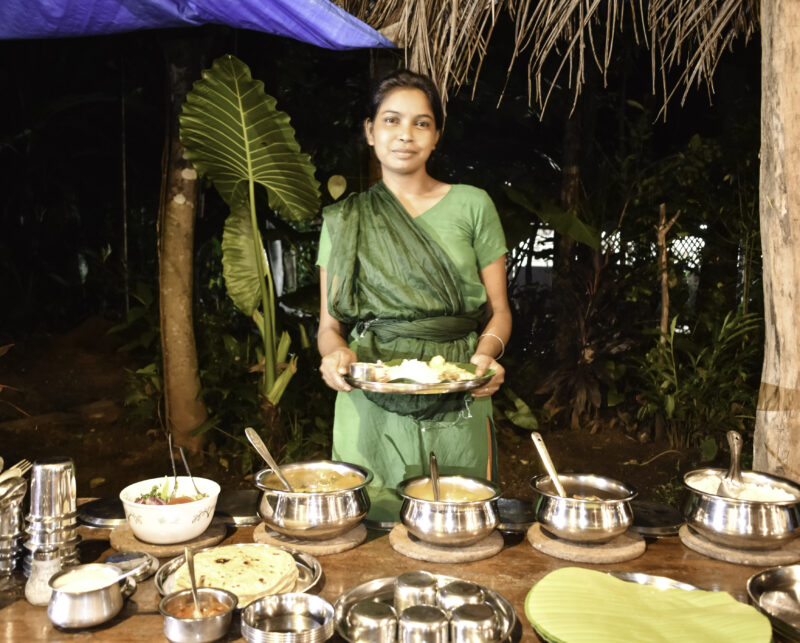
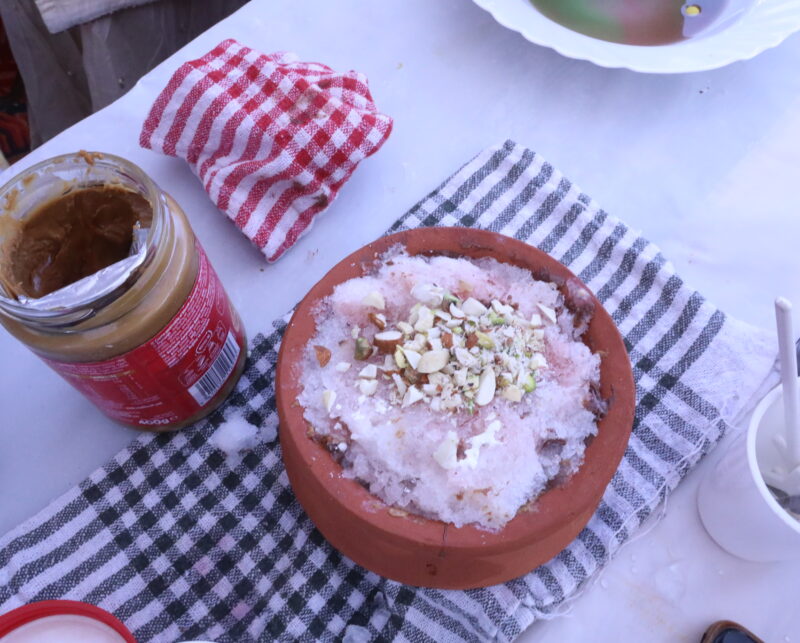
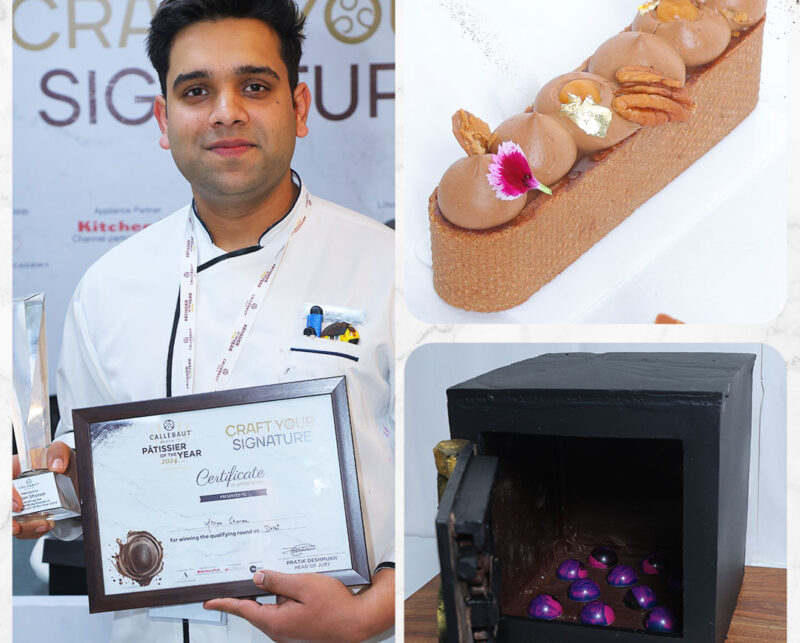
Super woman gratitue .love her
The article picturises Paris in all its grandeur and the intricacies of the French food and a beautiful memory with Khushwant Singh!!! Loved the article
Delectable description of food, of Paris, of conversations in between meals – just she it happens her books.